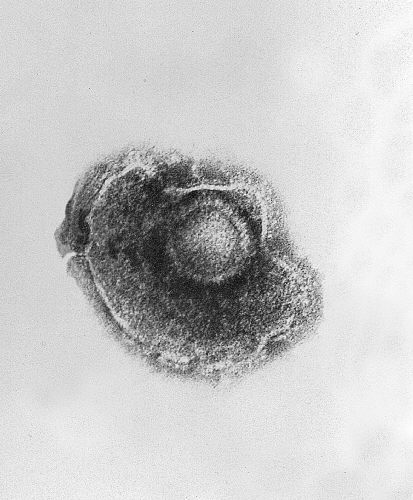Key points
- This varicella-zoster virus (VZV) laboratory information applies to testing and diagnosis of both primary VZV infection (varicella) and reactivation (herpes zoster).
- The preferred diagnosis method is detecting VZV DNA by PCR from scabs, vesicular fluid, or cells from the lesion's base.

Submitting specimens to CDC
After contacting your health department, follow these guidelines when collecting and shipping specimens for varicella-zoster virus (VZV) testing:
- For all available tests: CDC Infectious Diseases Laboratories Test Directory
- Specimen submission form: Complete CDC specimen submission form (CDC Form 50.34) to send specimens to CDC from within the United States.
- For all forms: Go to the Central Website for Submitting Specimens to CDC
- Shipping and handling: Follow guidelines outlined on this page.
Watch video illustrating methods for collecting specimens:
Collection and shipping for VZV serologic assays
Refer to the Infectious Disease Laboratories Test Directory entry for each test.
Collection for VZV PCR/genotyping
Refer to the Infectious Disease Laboratories Test Directory entry for each test.
The preferred method for a laboratory diagnosis of VZV infection is a polymerase chain reaction (PCR) test. Ideally, the presence of viral DNA should be demonstrated in vesicular fluid, maculopapular lesions, or scabs from lesions.
Recommended methods
Polyester swab
This method is best suited for sampling vesicular lesions.
- Use a sterile needle to unroof the top of the vesicle.
- Use a sterile swab to vigorously wipe the base of the lesion to collect vesicular fluid. Apply enough pressure to collect epithelial cells without causing bleeding.
- Important: Collect infected epithelial cells from the base of the lesion which usually contain virus.
- Swab type: CDC recommends swabs made with polyester tips and plastic stems. Do not use swabs with wooden stems.
- Important: Collect infected epithelial cells from the base of the lesion which usually contain virus.
- When multiple swabs from the same patient are collected place each swab in a separate tube to avoid cross-contamination. Label tubes individually and ensure they are resistant to breakage.
- Swabs can also be placed in 0.5−1.0 mL of viral transport media.
Glass slide
This method is critical for the collection of material from maculopapular lesions.
- Rake the edge of the slide over the selected lesion, abrading the lesion with sufficient vigor to ensure that skin cells are gathered onto the slide.
- Use a sterile polyester swab to scrub the abraded lesion and (using the same swab) collect the material collected on the edge of the slide.
- Important: If more than one lesion is sampled, use a separate swab for each one.
- With young children: It may be less stressful for them if you ask them to help with this.
- Important: If more than one lesion is sampled, use a separate swab for each one.
- Insert the swab into a tube and close it (many swabs are provided with a tube that includes a label for marking the specimen).
- Ship in a padded envelope. The swab for each sampled lesion must be placed in a separate swab tube, but multiple tubes can be shipped in the same envelope.
Collecting scabs
Scabs are excellent samples for PCR detection of VZV DNA. Whenever present, lift scabs off the skin (a glass slide can be used for this purpose). Then transfer directly into break-resistant, snap-cap or screw-top tubes.
Collecting other specimen types
For some disease presentations with a suspected VZV etiology (e.g., meningitis, multi-focal organ damage), samples of cerebral spinal fluid (CSF); blood; biopsy; or autopsy tissue may also be collected and shipped.
Shipping VZV PCR specimens
Refer to the Infectious Disease Laboratories Test Directory entry for each test.
In rare cases involving severe complications or death, other specimens may be sent to the CDC Herpesvirus Laboratory for PCR testing. These can include biopsy or autopsy tissue, cerebrospinal fluid, and peripheral blood.
Sources of suitable supplies
Freezing vials: 2.0 mL polypropylene vials are available from a number of companies, including Nalgene Labware (#5000-0020); Wheaton Science Products (#985916); Corning (#430659, 431386); and Nunc (#347627).
Swabs and tubes: Suitable swabs and tubes are available through distributors of scientific laboratory products (e.g., Fisher Scientific and WVR International. The following are examples of appropriate supplies:
- Swabs: Puritan™ Polyester-Tipped Applicators. Cat #: 22-029-626 (Fisher Scientific).
- Tubes: Cen-Med 10 mL sterile tubes with 3 mL VTM. Cat #: 21-520-184 (Fisher Scientific). Similar tubes with no VTM are also acceptable.
